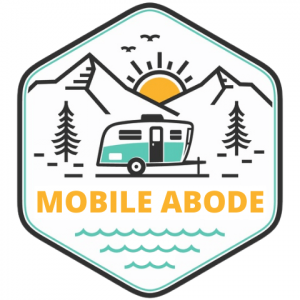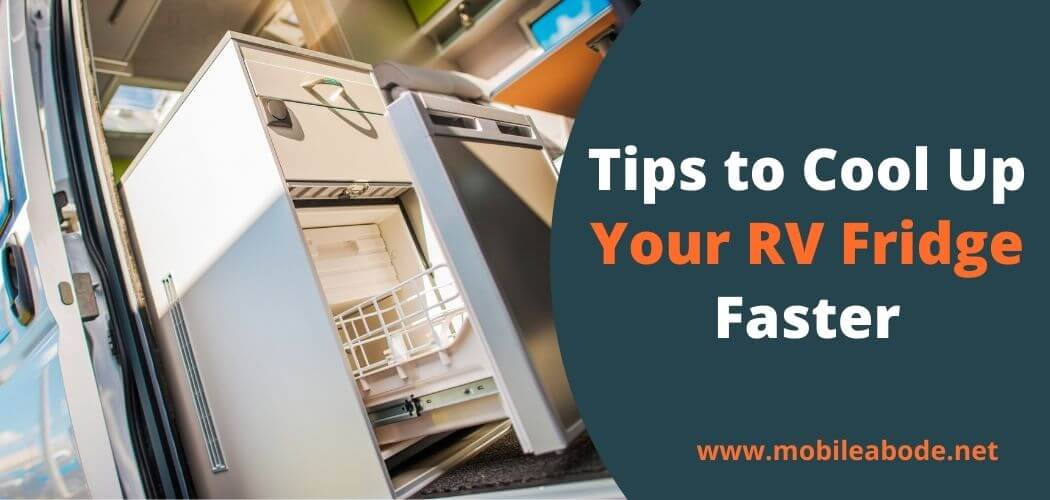RV fridges can take a while to get cold. Depending on the size of your fridge, it could take anywhere from eight to 24 hours for it to reach the desired temperature.
To make sure you have everything you need for your trip, start cooling your fridge down well before you leave. If you’re in a hurry, there are some things you can do to speed up the process.
Tips to Cool Up Your RV Fridge Faster
The first thing to do is to remove all of the food from your refrigerator. This will help the cold air circulate better and will speed up the cooling process.
If you can’t remove all of the food, at least move it to the back of the fridge where it is cooler.
You can also place ice packs or frozen water bottles on top of the fridge. This will help to cool it down faster. Another option is to use a small fan to blow cold air onto the fridge.
If you follow these tips, your RV fridge should be cool and ready to go in no time!
You can place a thermometer in your fridge to get an exact reading on the temperature. If it’s not cold enough for you, try some of these tricks:
- Open the fridge door every hour or two for about 30 seconds. This will allow some cold air out and bring in more cool air from outside of the RV.
- Place a frozen bottle of water or two in the fridge. As the ice melts, it will help to cool the fridge down.
- Put your food and drinks on ice. This will help to keep them cold until the fridge reaches the desired temperature.
If you’re still not getting the results you want, you may need to invest in a portable RV fridge/freezer. These units can be plugged into a 12-volt outlet or run off of propane, and they can reach temperatures as low as -5 degrees Fahrenheit.
This can be a great option for those who like to camp in colder climates or who want more control over their RV’s temperature.
No matter what type of fridge you have, make sure to give it plenty of time to cool down before you hit the road. With a little planning, you can ensure that your food and drinks will stay cold all trip long.
Also Read: Can You Use A House Thermostat In An RV?
Fastest Way to Cool RV Refrigerator
One of the fastest methods to cool a large or small RV refrigerator is by putting it in a sealed ice chest with lots of ice, and let sit overnight.
Don’t forget to put a thermometer inside your ice chest so you can check the temperature. Most importantly make sure that all vents are closed.
One important thing to remember is if your fridge has been opened since it was plugged into shore power at home, allow for an additional 8 hours+ before placing food back in the fridge/freezer after the initial overnight cooling session.
This will ensure maximum cold air output from your crafty trick above using a cooler or two!
This method works great if you hate spending money on refrigerated gas while camping would love to have a cold beer and/or food.
To keep your ice chest from melting, you can fill 2 or 3 bags with dry ice and place them into a cooler before placing your fridge in for an overnight cooling session. Make sure to put a note on the lid (on top of the dry ice) so someone doesn’t remove it by mistake.
Dropping temperatures down low enough will ensure your fridge stays cool all day long even if left out in the hot sun!
When done properly, not only will your ice pack stay frozen for days but your 12-volt battery (if powered by the same) should stay charged up too!
If the weather gets hotter than 80 degrees F, we find that we don’t need to open our fridge unless we want fresh veggies or fruits.
Things to be careful about when using RV Refrigerator
1) Never place anything against the back wall of your refrigerator/freezer. Doing so will block cold air from circulating properly which will cause the fridge to overheat – or in some cases – shut down entirely.
2) Some RV refrigerators/freezers are equipped with fans that draw cold air into them from outside of the cooling compartment. This means that if there is no air flow coming into the unit, it will not start up again until it is fixed by a professional.
3) Many people choose to use large ice packs or blocks of ice instead of a 12-volt cooler because it’s more convenient and frees up counter space in the RV.
Although this is a great way to keep your food cool, make sure you don’t use large chunks of solid ice as these can damage the walls/floors inside your fridge over time – especially if you’re travelling on rougher roads.
4) If you need to stop for the night but don’t have enough power left in your battery to run the cooling fan, there are ways around that problem. You can turn off all interior lights and appliances then wait 30 minutes before powering down your fridge. This should give it plenty of time to cool everything down so you can close the door and shut it down safely.
Why Is My RV fridge not getting cold enough?
There are many reasons why your fridge might not be getting cold enough and we’ll do our best to explain each one below.
- Make sure nothing is blocking the back of your unit or impeding the airflow.
- Check all fuses and make sure your 12v-to-110v inverter is working correctly.
- Most new refrigerators on the market today come with a side-mounted freezer compartment. When this is on, it draws cold air from the lower unit (fridge section) and pushes it out of the top opening. If you don’t want to use your freezer, you can turn this off by unplugging your unit and hitting the power button at the back of your fridge for 5 seconds.
- If everything seems fine and there’s still no airflow coming into your unit, try disconnecting the compressor wire harness and plugging it in again. If this fixes it, replace that faulty cord ASAP!
- Make sure there are not more than 2 inches of space between frozen items inside your fridge – otherwise, they won’t get cold enough to freeze.
- If your freezer is sectioned off from the main compartment, make sure it’s set to 0 degrees F and that the door is shut tightly.
- Some older RV refrigerators have a switch at the back that needs to be turned off during transport because they will overheat when this feature is left on. If you don’t see a switch or button, check with a local dealer who might be able to tell you how this works for your particular unit.
- Finally, if all else fails… try plugging in somewhere else (if you’re not already) and turning it on again. This usually solves any issues like these assuming there are no other factors involved.
Related Article: Electrical Service Requirements For Mobile Home
How do I know if my RV fridge is working?
Once your fridge is plugged in and you turn it on, you should see a flashing green light. This means that the power is working and the unit has been powered up correctly.
If the flashing light is red or not on at all, this usually indicates that there’s an issue somewhere within your unit.
At this point, you’ll need to figure out what’s causing the problem before you can begin using it again.
For example, if you have checked all of your fuses and everything looks fine but still don’t have a flashing green light, try pressing the reset button on the back of your fridge for 5-10 seconds with a small flat-headed screwdriver or pen.
After doing so, wait a minute and plug it in again. If this doesn’t work, you may need to contact a professional who can look at your unit and make the necessary repairs.
Conclusion:
My RV fridge is finally cold! It took about 10 hours for it to cool down. I’m so happy now that I don’t have to worry about my food spoiling any longer.
You can read more about how long it takes a refrigerator in an RV or other vehicle to get cold at Fridge Temperature and How To Tell If Your Refrigerator Is Working Properly on our blog today.
We hope you enjoy the post, and we look forward to hearing from you soon!

